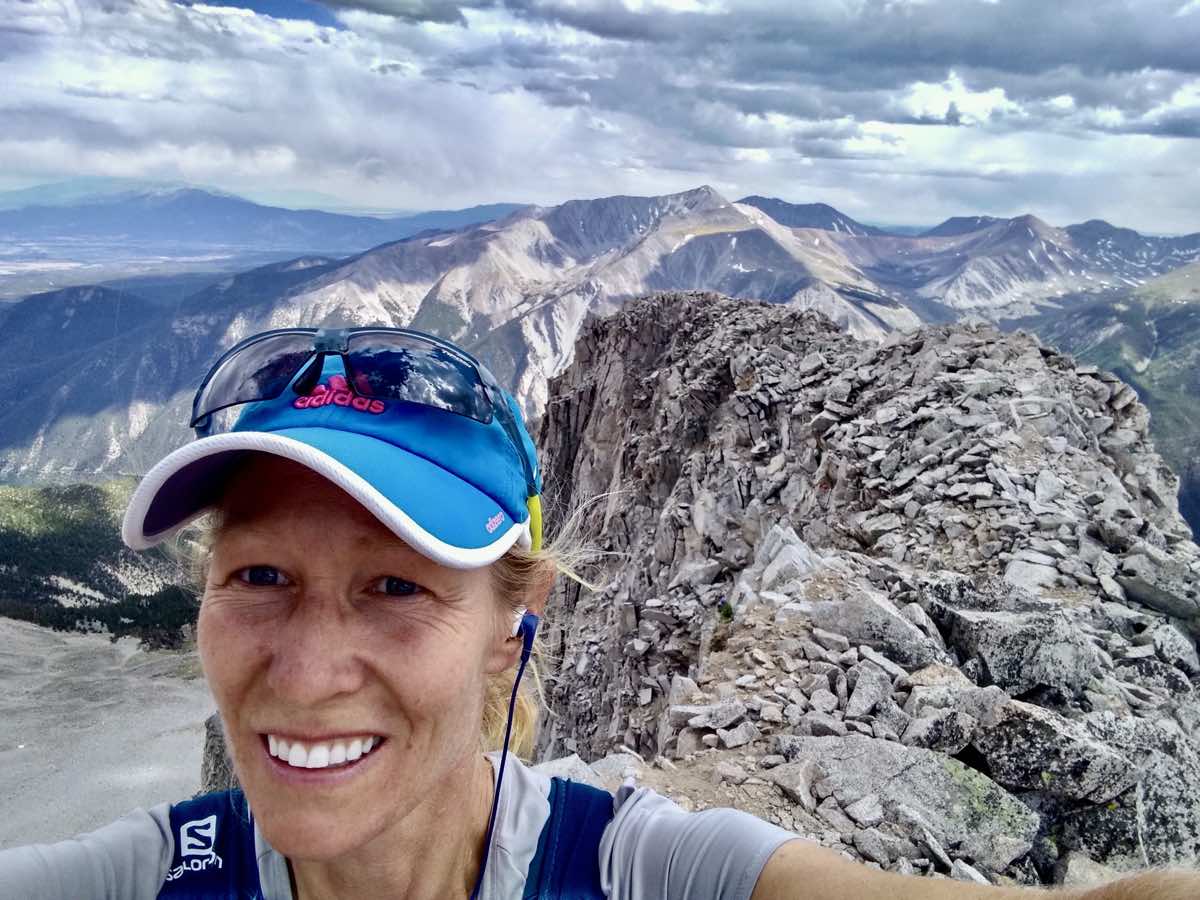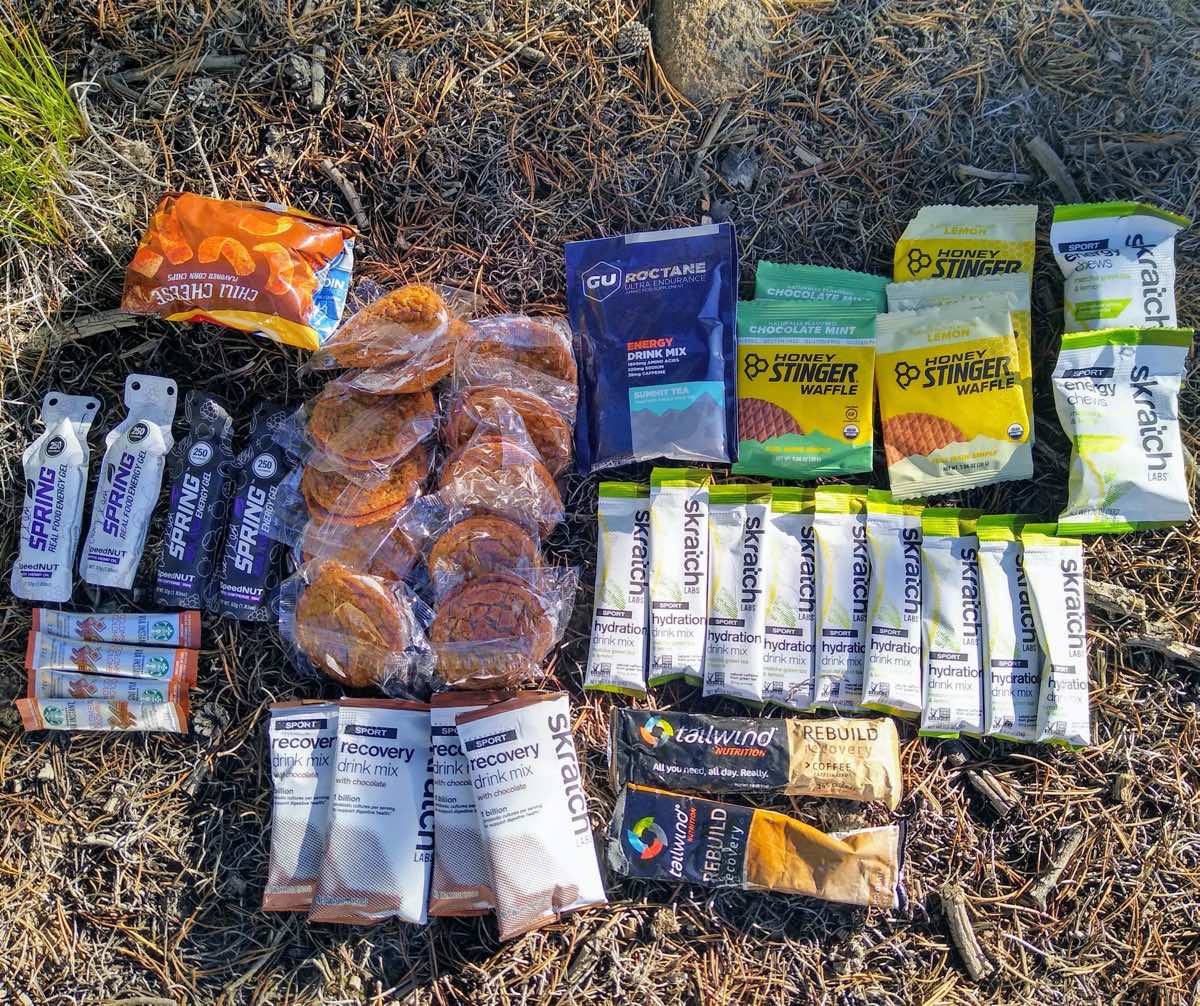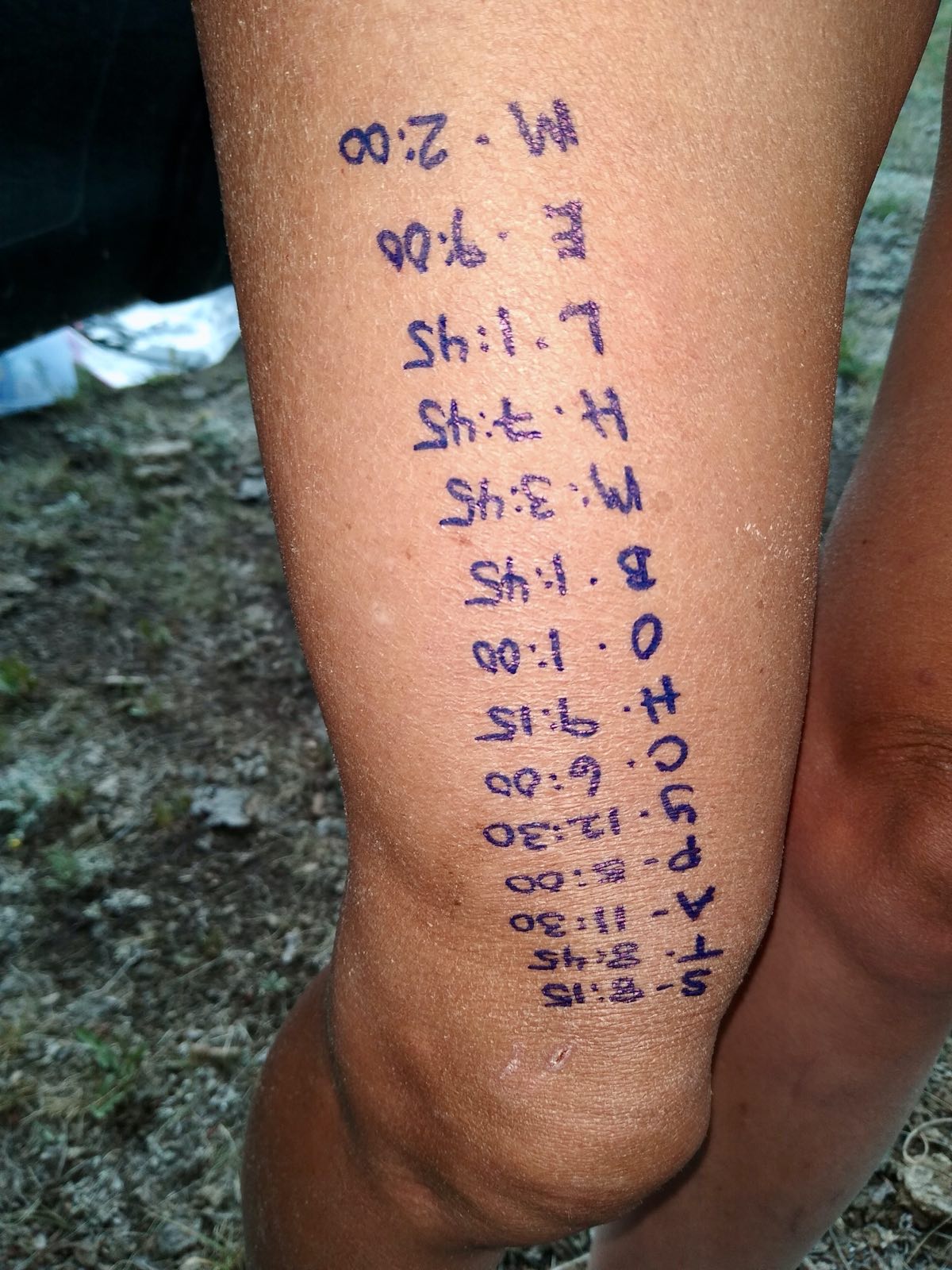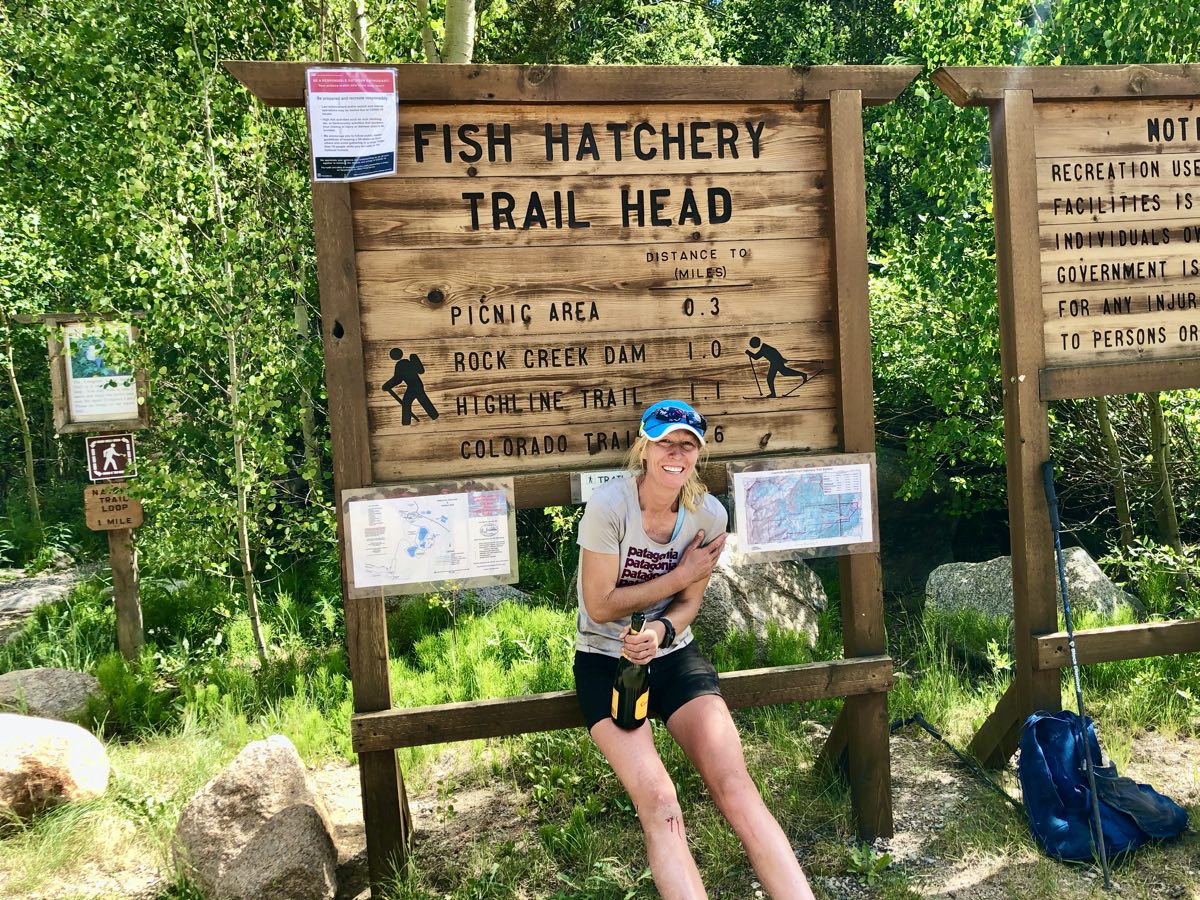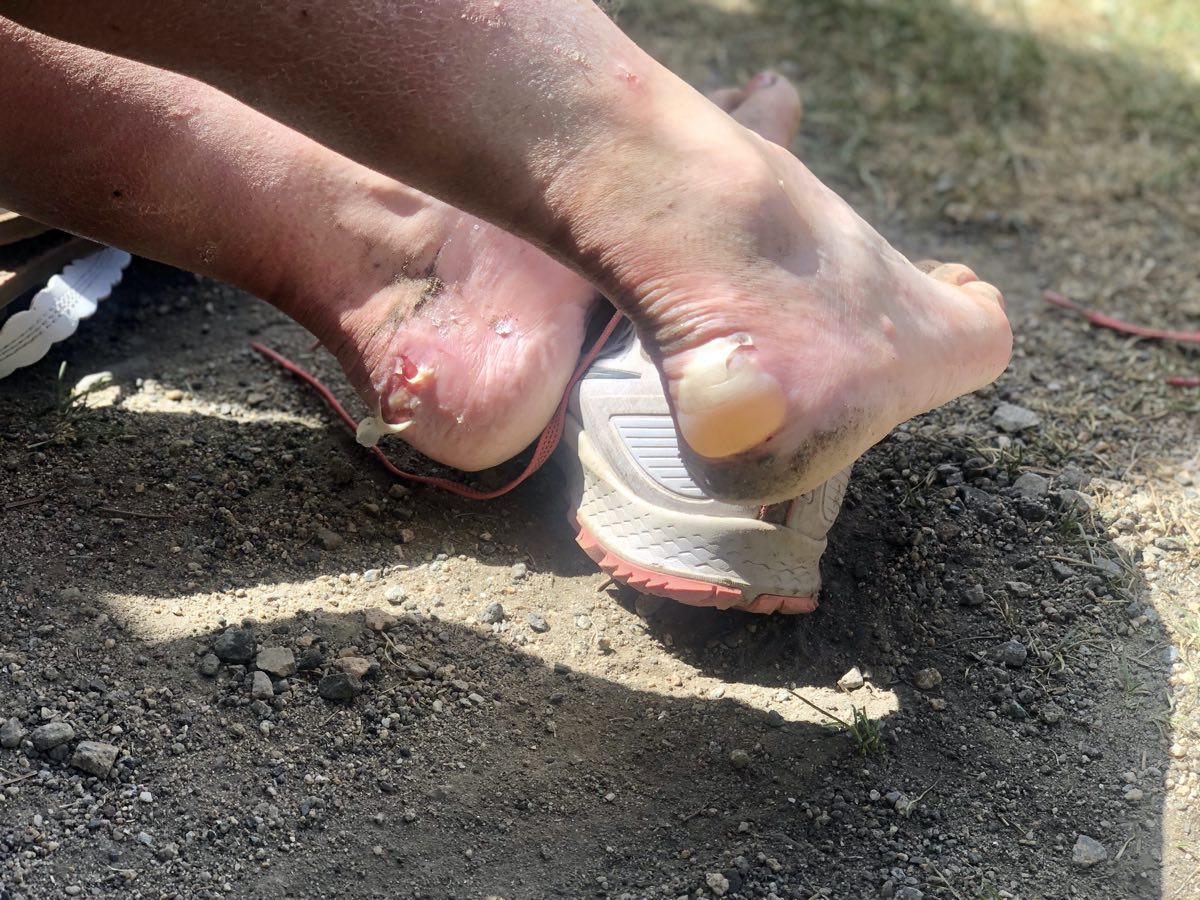Sarah Hansel set the first women’s unsupported fastest known time (FKT) as well as a new women’s overall FKT on the Nolan’s 14 line in the Sawatch Range of Colorado in 57 hours and 43 minutes. Her July 6 through July 8 effort bettered the overall women’s FKT of 59:36 set by Meghan Hicks in 2016.
The Nolan’s 14 line is a link-up of 14 mountains in excess of 14,000 feet in elevation. Athletes can connect the summits by whatever routes they choose, but routes commonly add up to about 95 miles in length, about 44,000 feet of climbing, and about half off trail.
This is a transcript from an interview with Sarah the day after her finish. Sarah talks about her background in running, her years of preparation on the Nolan’s 14 line, and how her effort played out.
iRunFar: You’re South Carolinan?
Sarah Hansel: I’ve been in South Carolina for 16 years. I’m from New Hampshire originally and I lived there until I was 15, then I went to boarding school in Connecticut, then college in Virginia. I just kept working my way south.
iRunFar: You have a really interesting job! You train horses.
Hansel: I do! I train race horses, eventers, and show jumpers. I train a lot of young ones–horses that haven’t been broke yet–so I’m the first person to sit on them.
iRunFar: Does that require patience?
Hansel: A lot.
iRunFar: Is it athletic? A physically demanding job?
Hansel: It takes a lot of coordination, and riding race horses burns more calories than you do when you’re running.
iRunFar: How did you discover horses? Were they a part of your childhood?
Hansel: We were living on a farm in New Hampshire and we got a free pony. That was the end of it… or the start of it [laughs]. I think I was three. I’ve been around horses ever since.
iRunFar: When did running become part of your life?
Hansel: I’ve been running for about eight years. I played soccer when I was a kid, but I didn’t do track or cross country or anything like that.
I was working with race horses and went to Australia in 2011 for six months. I had afternoons free to go exploring, and we went to all of the different parks and started hiking. We did the Great Ocean Road by Melbourne. I ran the trail along the cliffs and we went 11 miles, and we could look back and see where we started. I thought it was the coolest thing that you could travel that far on foot.
I didn’t race until 2012. I came back and did a half marathon that fall. I think I did a 50k the next year.
iRunFar: How did you go from an 11-mile run to ultramarathons and gnarly peak-bagging routes?
Hansel: I ran 11 miles and I thought, “That’s almost a half marathon.” So I registered for a half marathon put on by The North Face in Georgia. I didn’t even know at that time that they offered 50k and 50-mile options. When I got to the race and saw other people doing that, I was like, “I want to do that.” The next year I ran the 50k, then I did a 40 miler, then I did the Georgia Death Race, and then a 100 miler.
iRunFar: What makes a new runner see a name like “Georgia Death Race” respond with, “Sign me up?”
Hansel: A friend talked me into signing up. As for my first 100 miler, I saw a video of Kilian Jornet running UTMB. I thought, “I don’t even know what that is, but I’m going to do that.” I did UTMB in 2016.
iRunFar: You’ve been to Europe to race multiple times now, right?
Hansel: Yeah, I’ve been doing it for four years now.
iRunFar: In addition to UTMB, you’ve done Tor des Géants.
Hansel: And I’ve done the Ultra Tour Monte Rosa twice.
iRunFar: Let’s talk about your Nolan’s 14 “origin story.” You discovered it while you were in Colorado for another event?
Hansel: I did the Leadville Trail 100 Mile the year that Anna Frost and Missy Gosney ran Nolan’s [in 2015]. It was the same thing. I didn’t know what Nolan’s was. I just knew there were a couple girls up in the mountains doing something crazy. It was kind of like when I saw footage of Kilian running UTMB: “I must do that.” I had never climbed a 14er before.
iRunFar: You came to Leadville and 10,000 feet for the first time and you said to yourself, “I want to go higher.”
Hansel: Of course!
iRunFar: I like how you think. Has this has been your third summer in Colorado spending time on the Nolan’s route? Or has there been more?
Hansel: This has been my third summer of attempting it.
iRunFar: You came out and played on the line before that?
Hansel: I came out one year and did the trails connecting all of the mountains. I only did the standard routes, no off-trail stuff. Then I came out the next year and started scouting the off-trail stuff. I thought people like Anna and Missy were pretty badass, so I decided to just go check it out to see if it was something I’m even capable of doing.
iRunFar: You are that badass.
Hansel: I didn’t grow up in the mountains. I didn’t know if I could do something like that. I stuck my toe in to see what it was like.
iRunFar: How did it feel? Hot or cold?
Hansel: I went in slowly enough that it was good.
iRunFar: You kept coming back. This was your fourth attempt.
Hansel: My first two supported attempts, I had really bad luck. My third attempt, unsupported, had really bad weather. It looks so simple on paper, like you should be able to go out there and do it. And then something always happens.
iRunFar: This time you opted to go unsupported again. What was your reasoning behind that choice?
Hansel: It was honestly really hard to organize crew because you’re so dependent on the weather. If I use people who live out here to crew me, they work. If I ask friends who live back home, they fly out for a specific date. And flying with COVID-19 was really hard. It was just too much to organize. I had done an FKT earlier this year unsupported and really enjoyed it.
iRunFar: Which FKT was that?
Hansel: The SCAR [Smokies Challenge Adventure Run].
iRunFar: How long did it take you?
Hansel: Nineteen hours. It’s a great route. It’s around 71 miles [of the Appalachian Trail through Great Smoky Mountains National Park]. It was fun.
iRunFar: That was part of your build-up to Nolan’s?
Hansel: Yeah, that was my test to see if I was fit, and if I could do it on my own, and what I needed to carry. I started the SCAR at around 11:00 p.m. and went through the next day, so I didn’t need to deal with a lot of sleep deprivation. It was a big difference [compared to Nolan’s].
iRunFar: Can we talk about your kit? Yesterday when you finished, you had a 12-liter Salomon pack.
Hansel: It was awesome. It was whatever model their newest one is. I have the older model, too, but this one held probably a third more. It says it has capacity for 12 liters, but it was more like 15. I had more space than I needed.
iRunFar: What did you do for gear?
Hansel: I had some Patagonia shorts with pockets, which were great. I had a capilene shirt. All my stuff is Patagonia–I’m not sponsored, I just like their stuff. I had the waffle-weave long-sleeve hoody. I used the hood on every summit. I had a Patagonia down jacket, the medium-weight one. I had some mittens, but I lost them around Mount Princeton. If anyone sees them, I’d love them back [laughs]. They were strapped to one of the straps on my pack. I must have brushed against a tree and pulled them off. I was definitely missing those at night. I also had rain pants and I took my lightweight rain jacket, the Ultimate Direction, and I kind of regretted it. I would have liked something a little heavier for the wind.
iRunFar: What did you wear for shoes?
Hansel: The Saucony Peregrine 10.
iRunFar: How about your food?
Hansel: I had a lot of Skratch, and some Skratch recovery. I had some Tailwind recovery, but I didn’t end up using it. I had 12 oatmeal cream pies, and I think I maybe ate six of them. I had barbeque-flavor Pringles, and I ate all of those. I had Fritos and some chocolate-covered pretzels, but just a handful. I should have brought a big bag of those. They went down very well [laughs]. Oh, and I had the little instant packets of Starbucks coffee.
iRunFar: Were you happy with all of those choices?
Hansel: All of the food was okay. I tend not to eat a lot out there, so I do mostly liquid calories. I probably only used half of what I brought.
iRunFar: How was your energy?
Hansel: The hardest thing was the lack of sleep. Other than that, I felt great. I had no issues with my legs. I got off pretty easy, but the sleep deprivation really got me.
iRunFar: You started from the trailhead at 6:00 a.m. at the south end of the line. How were the first couple peaks? You fired off pretty quick.
Hansel: I started after this guy who was running up and was concerned that I had started just behind him. He was just ahead of me, and he kept looking back at me. We were playing this game where I’d mess with his head and keep catching him. But he went up the standard route and I cut across to the saddle. He beat me to the top, which was kind of disappointing, but then I beat him to Tabeguache Peak, so I got him back [laughs].
iRunFar: You posted your projected splits before you started, showing a goal time of 58 hours. You were immediately ahead of your splits!
Hansel: I don’t know how! Last year I did it and thought I was flying. This year I did it, and every time I looked at my watch, I’m like, “I’m 15 minutes faster.” I kept taking time off and yet I didn’t feel faster. I thought there was a time warp, like maybe my watch was wrong.
iRunFar: That has to be a good feeling.
Hansel: Yeah, it definitely gave me confidence.
iRunFar: I feel like the first three peaks are a warm-up. They’re not insignificant, but I feel like the true start of Nolan’s when you’re traveling in this direction is going over Princeton.
Hansel: Princeton… I hate him and he hates me. It’s mutual.
iRunFar: But you had a good day on Princeton?
Hansel: I had an awesome day on Princeton.
iRunFar: So, have the two of you changed your relationship now?
Hansel: I think he just doesn’t want me to come back. He’s like, “I’m just going to let her through this time.” He–it’s definitely a he [laughs]–has messed with my head a couple of times. I go up the south ridge and I call it Crybaby Ridge because I’ve literally made a phone call from the top three times. I’m not a good climber, and it took me a while to find that line that you can just scoot across.
iRunFar: Crybaby no more.
Hansel: I’ve got it now.
iRunFar: For you, nighttime came on the ascent of Mount Yale, the fifth mountain. How was the first night?
Hansel: That one went great. I got to the top of Yale before it was dark. I changed my route at the last second and it worked out great because I was able to do it in daylight. I thought both the ascent and descent were perfect. That’s one that I did do well.
iRunFar: In my opinion, one of the hardest parts of doing the Nolan’s route in this direction is doing Mounts Columbia and Harvard in the dark. How was that?
Hansel: I got to Columbia and I started going up the wrong ridge. I don’t know why. The nose is right there, and I kept going left. It was nice and easy and wasn’t that steep, but then I kept checking my track and I was way off my track. I had to come all of the way back and get back on the steep, crappy stuff. It was still dark at the top of Columbia, because I was trying to take pictures of all of my summits and it was pitch black. It was nice, though, that I had a full moon and I could navigate with that.
iRunFar: Did you see any people in the nighttime?
Hansel: I don’t think so. I saw a herd of goats running across the hills, which was really cool.
iRunFar: When did the sun come up for you?
Hansel: I was going up Harvard.
iRunFar: By this point you’re in the core of the route. How did that go?
Hansel: I messed up my ascent of Mount Oxford at the bottom. It was another one of those situations where I know where to go, but then I got confused and started wandering around. I was just tired. I’ve done those routes so many times that I should be able to do it in my sleep, but I couldn’t figure out where I was. I bumbled the whole bottom part. I got up okay and ran across to Mount Belford. I just bombed off the nose of Belford and up the trail to Missouri Mountain. I don’t know if that’s faster, but it doesn’t require thought. I was at the point where I didn’t want to think, so I just did it.
iRunFar: Is that normal for you to think to yourself, “I’ll make my route choice in the heat of the moment?” Or did that come about more organically?
Hansel: Probably more organically. I think now I have scouted it too many different ways and I have too many options. I guess it’s good. Last year on Yale, I went up to Denny Creek and walked up the road three miles and then took the trail because I was doing it in the dark and I didn’t want to have to navigate anything. I think having that option where you can turn your brain off and follow a trail is nice. Sometimes that’s faster than trying to figure out where I am when I’m not focused.
iRunFar: By that point, you must have been hours up on your splits.
Hansel: I was two hours ahead of what I had written on my leg.
iRunFar: The ascent of Mount Huron was your nemesis in 2019, right?
Hansel: Last year we had all that snow, and Huron was the one mountain I hadn’t scouted that year. I had done it a bunch of times before, though. The whole gully was full of snow. I had Kahtoola Microspikes and poles, but it’s so steep at the top. I don’t have the experience to climb stuff like that and it was pitch black. So, we couldn’t get up and I had to turn around. It was really frustrating. It was just a lot of bad luck.
iRunFar: What did it feel like to get to the top of that gully this year?
Hansel: I was so happy. And I went up it pretty fast. It didn’t feel that bad this time.
iRunFar: When you got the top did you whoop, did you smile, did you fist pump, what did you do?
Hansel: I was just happy. I was relieved to get up there but then I was thinking of La Plata Peak, and it kind of freaked me out because I never had to go that far. I was like, “Oh, there’s a lot left.“
iRunFar: Oh, I hadn’t thought about that! Then you were going into new distance on the route. It got dark for you on the ascent to La Plata.
Hansel: I was hallucinating on Huron, the whole way up. There were five tents right when it starts to get steep.
iRunFar: Like a party [laughs]?
Hansel: I decided in my head they were these geological people and they were studying the rocks and the water [laughs].
iRunFar: Oh, there were people, too [laughs]?
Hansel: I mean, they weren’t there when I got there. They were there the whole climb. So I realized that I probably wasn’t quite right in the head, so I went a little bit down the road to La Plata and I tried to sleep for 45 minutes.
iRunFar: Did you sleep?
Hansel: Not at all. I got so cold that I just sat there and shivered. I had all my clothes on. I had an emergency bivy that I didn’t take out. I should have gotten in that. I found some, you know when the squirrels chip the bark? It makes a really nice mattress. So I laid on that and I think one of the squirrels got a little mad at me [laughs]. It started yelling at me. I think I might have been laying on his hole. I just wasted 45 minutes. I might have closed my eyes but it didn’t do much. And then I saw another tent at the top of La Plata.
iRunFar: Amazing!
Hansel: Which I think was real. It didn’t disappear when I got closer to it [laughs]. That one was still there. But I got really, really disoriented up there. I know that one’s hard in the dark and I probably should have practiced it in the actual dark because there are so many false summits and different mounds of rocks all over the place. It’s hard to navigate.
iRunFar: Going in this direction, when you’re in your second night, it seems like a lot of people get turned around on La Plata. So you navigate to the summit okay but it was getting off that you got turned around?
Hansel: Yeah. I couldn’t figure out where the ridge even was that I was trying to go down. There are so many little random trails up there and some of them go somewhere and some of them don’t. I just kept trying them and it would go to a cliff, or it would go to just things that were not appropriate to go down, and I finally found one that was a solid trail and stuck with that.
iRunFar: Now you really knew you needed a nap.
Hansel: My brain wasn’t working. So I figured out that I had all my clothes on, and once I got down to treeline, I would hike really hard and get really hot, and then I could lay. I didn’t even take my pack off. I literally flopped on the ground. I would stay warm for maybe seven minutes. Maybe sleep for five. So I didn’t really even need an alarm, I just would start shivering.
iRunFar: You did that more than once?
Hansel: I did that three times.
iRunFar: Then you started climbing Mount Elbert. And you were going so fast.
Hansel: It didn’t feel fast.
iRunFar: How did it feel to get on the tallest point in Colorado and peak 13 of the Nolan’s 14 line?
Hansel: I knew I could finish then!
iRunFar: The last mountains, Mounts Elbert and Massive, are big.
Hansel: They’re really big mountains. I think I had two hours banked on my splits and I lost all that overnight [on La Plata].
iRunFar: So you were back on your splits [for 58 hours]. You come down Elbert. One more peak.
Hansel: That went great. Going up, I had another instant coffee. And there was a white marmot halfway up that I’ve seen twice now. I don’t think I hallucinated him because I saw him the other day too. And then there was a goat that came up to me twice. That was a good sign.
iRunFar: All the mountain animals coming out to greet you.
Hansel: I got to the top and I had another moment where I didn’t know where I was. I started to go down, and I was like, “I don’t recognize any of this.” I scouted it a ridiculous number of times. Then I got all freaked out that I had not tagged the summit and I started to go back up.
iRunFar: No you didn’t [turn around and go back up]!
Hansel: I did! I went down for like two minutes, and I was like, “I don’t recognize anything here, and maybe I came up the wrong spot [laughs].”
iRunFar: So did you go all the way back up?
Hansel: I didn’t. I checked my track which showed I had been to the summit. [I also started to remember that] there were 10 people sitting [at the summit] and they had a flag.
Then I totally botched the downhill, too. I couldn’t remember where to drop off, and I ended up going down this awful loose rock gully and I slipped and I fell and slid on my butt and went off this mini-cliff. It was enough that it scraped my whole butt and back and everything [laughs]. It was just a mess. I basically fell down the mountain.
Then I hit the woods and I did that perfectly. So that was amazing. And then the trail down was supposed to be like three miles and it felt like 20 miles. It was so long.
iRunFar: Did you let yourself think at any time on the downhill, “I’m going to do it.”
Hansel: Yeah! I could have probably walked it in at that point but you want to end on a high note. I kept trying to run and I was getting really stumbly [laughs]. I got to the very last turn, with the sign for the Fish Hatchery, and I’m staring at the sign and I was grinning. Then I catch a rock and then I did a full body slide down the trail on my face.
iRunFar: Going down the final mountain you scratched up the back and front of your body?
Hansel: It was like 20 seconds from going around the corner to the trailhead sign. I just wiped out. I get up, and I can hardly walk, my knee hurt so much, and I’m limping. There’s a guy sitting on the trail next to the stream, and I’m like, “I can’t limp past this guy.” So I try running and I fell again right in front of him [laughs].
iRunFar: Then you arrived. How did it feel?
Hansel: Good. Really good. Every time I’ve tried it, I’ve ended feeling good and strong and it just didn’t work out. I knew I could do it, and it drove me crazy that I could do it but I couldn’t do it. I just couldn’t seem to get it done. It was just nice to finally get it.
iRunFar: It’s a multi-year commitment you’ve made to this. You’ve shaped your summers around it. Have you been able to zoom out in perspective yet?
Hansel: I don’t know what I’m going to do now [laughs].
iRunFar: Plan another adventure! It’s difficult to have a perfect experience at Nolan’s. But do you now think, “I want to try it again and see if I can get faster?”
Hansel: I want to say I can do it two or three hours faster, but you’re going to deal with stuff every time. My thing was the sleep and I don’t know if I could do it without sleeping a little bit.
iRunFar: Now that you know how you reacted, could you go into it with a slightly more efficient sleep plan?
Hansel: Probably. And then I made so many navigation mistakes. Nothing tragic but I lost five, 10, 15 minutes in different places where it’s just, “Why did I do that?”
iRunFar: You had a great day.
Hansel: I mean, the worst thing that happened was that thing with my socks . I did not bring an extra pair of socks with me. That was not smart. For everybody out there, bring socks.
iRunFar: [laughs] You have a couple good heel blisters.
Hansel: One still hasn’t popped. I must have tough skin.
iRunFar: I think you have a lot of tough things. Tough heart, tough mind, tough body, tough heel skin.
Hansel: Disgusting feet.
iRunFar: [laughs] Congratulations on your finish of Nolan’s 14, and on both your overall and unsupported women’s FKTs.
Hansel: Thank you.
